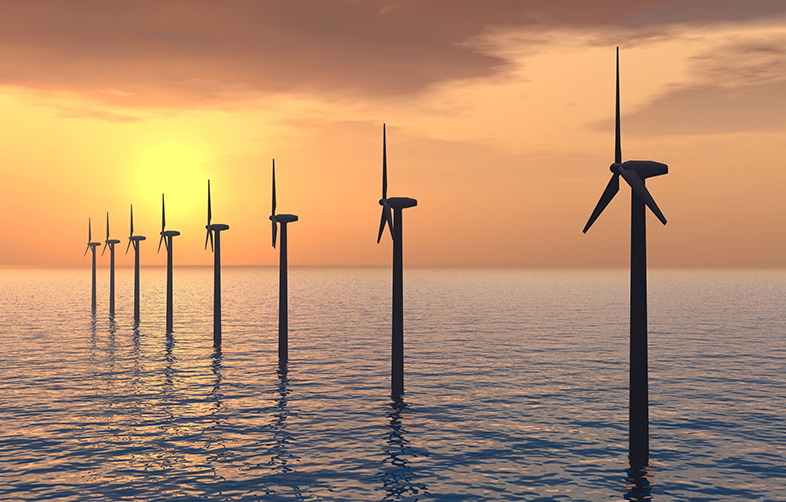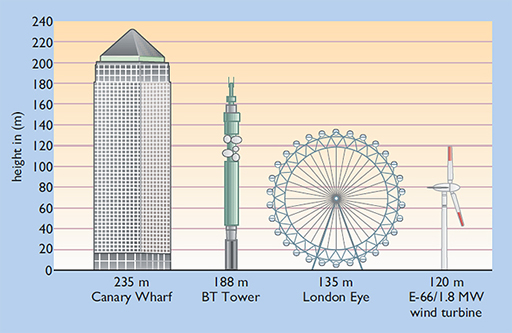6.5 Public attitudes and planning considerations
The visual perception of a wind turbine or a wind farm is determined by a variety of factors including:
- turbine size
- turbine design
- number of blades
- colour
- number of turbines in a wind farm
- layout of the wind farm
- extent to which moving rotor blades attract attention.
Figure 17 compares a wind turbine with other large constructions in the UK.
An individual’s perception of a wind energy project will also depend on a variety of less easily defined psychological and sociological parameters, with much of the controversy due to opposition to changes to the visual appearance of the landscape. Whether this is due to a visual dislike of wind turbines specifically, or simply to a general dislike of changes in the appearance of the landscape is often unclear.
Since the 1990s surveys of public attitudes have consistently shown that on average 70% to 80% support the development of wind farms in the UK (see for example NOP, 2005 and YouGov, 2010). However, there is still opposition to change and it is important for projects to be well designed and planned. Developers should engage with local communities to provide trusted and reliable information, together with meaningful community benefits.
Planning considerations and controls have a major influence on the deployment of wind turbines.
The UK Government includes planning guidance for wind energy in its National Planning Policy Framework, (DCLG, 2011). Guidelines for developers and planners have also been prepared by Natural England, Scottish Natural Heritage and the Countryside Council for Wales. Some UK local authorities have also developed policy guidelines on planning aspects of wind energy.

